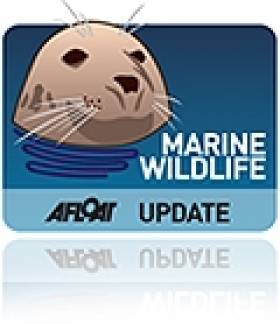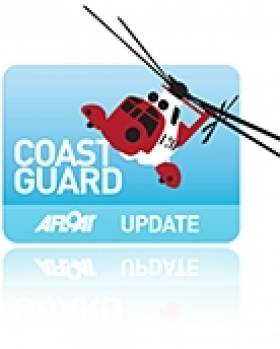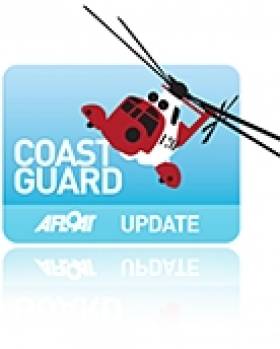Displaying items by tag: Howth Coastguard
Howth Coast Guard picked up a baby Porpoise stranded in shallow water off Portmarnock beach, Dublin yesterday and brought it one kilomretre back out to sea to safety.
Howth Coastguard was requested to assist the Irish Whale and Dolphin Group (IWDG) yesterday afternoon at Portmarnock beach in North Dublin as the youtube video above depicts.
A Coast Guard team from Howth station travelled by boat and jeep to the location and meet with the IWDG representative.
The decision was made to bring the baby mammal who was beached back to the sea in the hope it would swim away.
The boat team lead by coxswain Jaimie Blandford carefully placed the mammal on board and brought it a kilometre out into the open water.
Porpoises are very similar to dolphins but have shorter beaks and are seen in the Irish Sea with the same swimming patterns as dolphins.
The porpoise now named "Fungie Beag" was placed in the water, after some initial hesitation it successfully returned to the water and swam back into the Irish Sea, hopefully returning to its family.
Dublin Bay Mudflat Rescue Caught on Video
A Dubliner had a lucky escape after being stranded on mudflats between Baldoyle and Sutton Point, on Dublin Bay last week.
The man had sunk waist-deep in mud on a low tide and was unable to free himself. Dublin Fire Brigade was tasked to the scene along with the Howth Coast Guard unit. The Youtube clip of the entire incident is below.
Rescue helicopter 116, which was already on the ramp at Dublin Airport in preparation for a training exercise, was also tasked at 16.18pm according to a report on the the SAR Ireland blogspot.
After obtaining permission to cross the 'Live' runway at Dublin airport, R116 was on scene within minutes and quickly identified the man who was described as wearing 'dark clothing'. He was quickly winched to safety and returned to Dublin Airport at 16.36pm, where he availed of crew facilities to clean himself down and arrange transport home.
More on Dublin Bay here
Spending the Day with the Howth Coast Guard
The Government news service MerrionStreet.ie recently paid a visit to the Howth Coast Guard unit to see some of its 24 volunteers train on the water and cliffs.
Cliff rescue forms a major part of the work done by the Howth unit, so regular searches of the coves around the coast on Howth Head and training of new volunteers are are a must.
Their work is co-ordinated by staff at the new National Coast Guard Centre at the Department of Transport, which manages nearly 1,000 volunteers across 54 units nationwide.
MerrionStreet.ie has more on the story HERE.
Howth Coastguard in Car Plunge Rescue
Howth Coast Guard were paged yesterday to a car that had crashed into Howth harbour. Ten members of the unit joined members of the RNLI Lifeboat, Gardai and Dublin Fire Brigade. Two people had been in the car when it had gone off the middle pier in Howth; one of the passengers luckily managed to escape. The body of the other person in the car was recovered from the water by a dive team along with the RNLI lifeboat and taken away by Fire Brigade Paramedics.
The Coast Guard boat "Grainne" was launched and booms were placed in the water to contain any pollution threat from the car. The middle pier is the smallest one of three and is mainly used by fishing vessels. More HERE.

































































